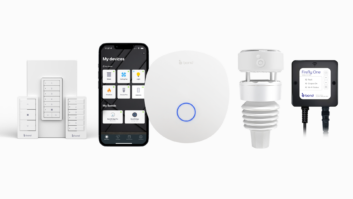The following study presents original research on shoppers’ online buying behavior within the consumer electronics category. The report, based on consumer polls, is the first in a series of e-commerce research projects for the investment banking community conducted by E*Offering, the investment arm of online securities broker E*Trade. Its appearance in TWICE marks its exclusive print debut.
Any essential understanding of the e-commerce marketplace requires answers to the following key questions:
- How many e-consumers are there?
- What do current shoppers buy?
- How many e-consumers will there be?
- What will it take to grow the market?
For the most part, the great majority of e-commerce research that has been culled to date attempts to address the first two points, while giving only some consideration to the third and almost none to the fourth.
Moreover, in many cases where market projections are included, the dangerous practice of presuming that what has occurred in the past can be used to predict the future is evident. That could work to some degree for established markets and products, but e-commerce is nothing of the sort.
“Rearview mirror” forecasting is always dangerous, but nowhere as dangerous as in the new and rapidly evolving world of e-commerce.
Aside from tackling the questions of audience size and growth requirements, this study is unique in that it addresses e-commerce not only as a whole but by individual market segments as well, including consumer electronics.
The result of this level of analysis is an indication that there are significant differences in the way consumers view individual product segments. We at E*Offering believe that understanding these differences will be critical in the evolution of selling consumer electronics online.
One size doesn’t fit all: While it is clear that consumers have taken to buying books and PCs on the Internet, one should not assume that their views of that experience will parallel what they think when buying audio or video products.
For example, while “convenience” is cited by a large number of consumers regardless of the product purchased, it is a much less important factor for those buying PC hardware and software than it is for those purchasing consumer electronics and products such as books, music, movies and apparel.
Also, while everyone is looking for a good price, the percentage of CE shoppers who cite price as a main consideration is less than half that of PC buyers.
There are other critical differences between these product segments as well. Far fewer CE shoppers than PC shoppers feel that online delivery issues are either “very” or “somewhat very” important when considering Internet purchases.
Indeed, shoppers tend to be more satisfied with product delivery for CE products, although in many cases we are talking about the same individual buying both CE and PC products from the same web site with the same shipping policy for both.
The importance of knowledge gatekeepers: To date, the great majority of products sold on the Internet have moved through e-tailers such as Amazon.com, as opposed to portals such as Yahoo or manufacturer sites by Clarion, Kenwood, Sony, and others. But once again, do not make the mistake of presuming that what has been will continue to be in the future, or that current buying habits represent the wishes of future e-commerce consumers.
Indeed, the percentage of future e-commerce consumers who say they are “more likely” to buy directly from a manufacturer is almost three times the percentage of those who say they are less likely to do so. And this is with very little in the way of direct manufacturer selling available to them.
Why is this so?
Consumers are clear in saying that they want knowledge prior to making a significant purchase — which includes almost all CE products — and at present they believe that such knowledge will more likely come directly from the manufacturer than from a retailer. But this is only their perception as of today.
Any of the three category sites — manufacturers, retailers or portals –could emerge as being perceived as better able to deliver “knowledge.” When that happens, you can expect that consumers will move in that direction for the purchase of their products as well.
So what does all this mean? E-commerce is barely in its infancy, but it would be dangerous to presume that it will not grow rapidly or that the sale of CE products will not be a significant part of it.
Bear in mind that just three short years ago, some forecasters suggested that total Internet sales would top out at $20 billion. Now, many are suggesting a ceiling of $100 billion or more, and the majority of Internet analysts believe that annual growth rates will be exponential for each of the next 10 years.
Like it or not, CE e-commerce is a reality, and its annual growth will greatly exceed that of traditional retail. But this should not be cause for alarm. Along with the products sold on the Internet will come the dissemination of information that will, in turn, result in the sale of even more CE products through traditional retail channels.
Grace Post is the primary market research analyst for E*Offering. For additional information, contact Post at (949) 399-0309 or e-mail her at [email protected].













